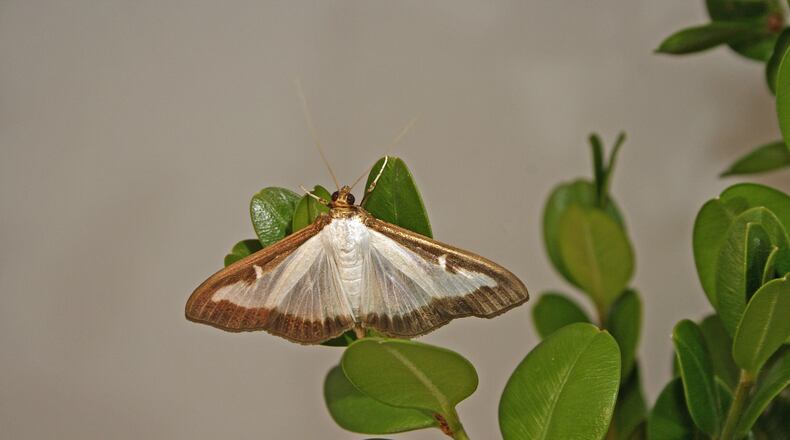Box tree moths are an invasive species from East Asia that pose a threat to boxwood shrubs, which the ODA called “an important ornamental shrub” in Ohio’s nursery stock.
The larvae are “ravenous eaters,” according to the U.S. Department of Agriculture’s Animal and Plant Health Inspection Service. In heavy infestations, the caterpillars can strip bare the host shrub and then start to eat the bark, eventually killing the boxwood, APHIS said.
This story is free
We've opened this story as free to help you experience the important and entertaining journalism we're producing. Here are some ways you can follow our work:
- • READ: How did animals react during the total solar eclipse?
- • READ: Another Dayton-area Frisch’s permanently closes
- • SIGN UP: Get the news of the day delivered to your inbox every morning with our free Morning Briefing newsletter.
- • SUBSCRIBE: Like what you see? Explore all special offers here
ODA said that box tree moths were first found in Ohio in June 2023 near the border of Hamilton and Clermont counties, and were confirmed in each of the other counties in the quarantine zone.
The ODA asked residents to watch for and report potential infestations by checking boxwood plants for signs of the moths, then taking a photo of any evidence of infestation and reporting it on the ODA website.
Credit: USDA photo by Hannah Nadel
Credit: USDA photo by Hannah Nadel
Signs can include chewed, cut or missing leaves, yellowing or brown leaves, white webbing and green-black excrement on or around the boxwood plant.
Caterpillars are green and yellow with white, yellow and black stripes and black spots, APHIS said. Adult box tree moths are nocturnal and have white, iridescent wings with an irregular brown border.
Leeoria Willis, extension educator at Ohio State University’s Montgomery County extension office, added that signs of infestation include missing sections or skeletonized leaves.
Willis said that residents can remove infested boxwood plant branches, and in heavy infestations residents can cut the boxwood from its base, then let the plant grow back from its roots. All boxwood debris should be double-bagged in plastic and placed in the trash.
Robert Siebenthaler, president of Siebenthaler’s, said that boxwoods are one of the most popular plants sold in the area, calling them “easily a top-five common plant.”
“They are really a bread and butter item in maybe 50% of homes,” he said.
However, he said that he was not concerned by box tree moths, and said that the quarantine was more of an issue for plant nurseries to keep them from spreading infested plants.
Siebenthaler said that the company wasn’t planning on changing its usage of boxwood plants, but will be adding pheromone traps, additional record-keeping and proactive pest searches.
For area residents, Siebenthaler said that the first step to protect their boxwood plants is to verify if a possible infestation is the box tree moths at a local garden center or the state extension agency, and then to use chemical controls to kill the moths.
If they are very concerned, Siebenthaler said that consumers can choose from a variety of alternative evergreen shrubs, and added that the company’s online plant shop has an entire collection of boxwood alternatives.
Jim Montague of Lakeview Garden Center & Landscaping in Fairfield also said that he was not worried about box tree moths.
He said that he was unaware of the quarantine when contacted, but said that box tree moths are easily killed with chemicals and are not nearly as devastating as emerald ash borers were.
He also said that boxwoods are extremely popular choices for consumers, and said the garden center sells a couple thousand each year. He added that they were even stocking new kinds of boxwoods that are more resistant to diseases.
About the Author



